My “Once in a Lifetime Projects” folder got an exciting update with the record-breaking longest ski jump performed by Japanese ski jumping star Ryōyū Kobayashi. This spectacular attempt took place in Iceland, and I feel privileged to be able to capture this historic moment. Witnessing something unprecedented through my lens is always challenging and brings enormous responsibility but also immense satisfaction.
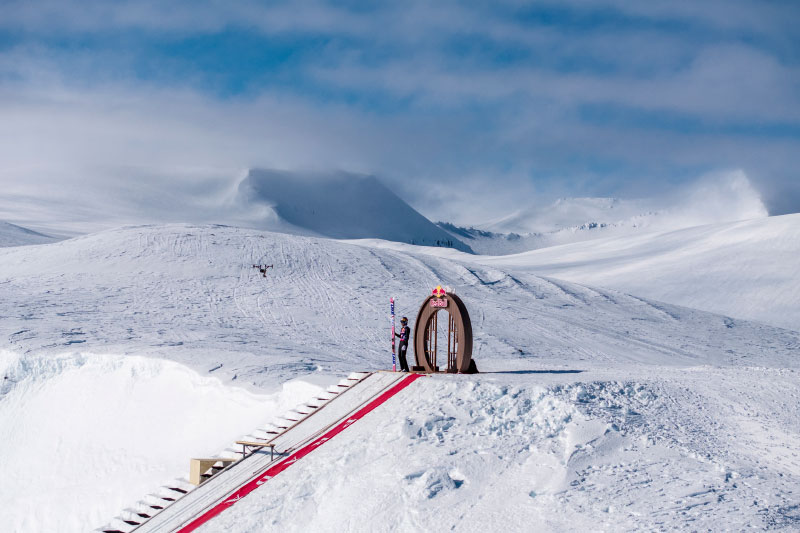
On the morning of April 24, 2024, Japanese ski jumping star Ryōyū Kobayashi launched from a natural takeoff table in northern Iceland and flew for 291 meters before landing safely on the snow. A culmination of two grueling days of attempts, the feat set a new world record for the longest ski jump. And while the spectacular setting evoked the roots of the sport, the distance rocketed ski jumping to new heights, smashing the previous record by a remarkable 37.5m.
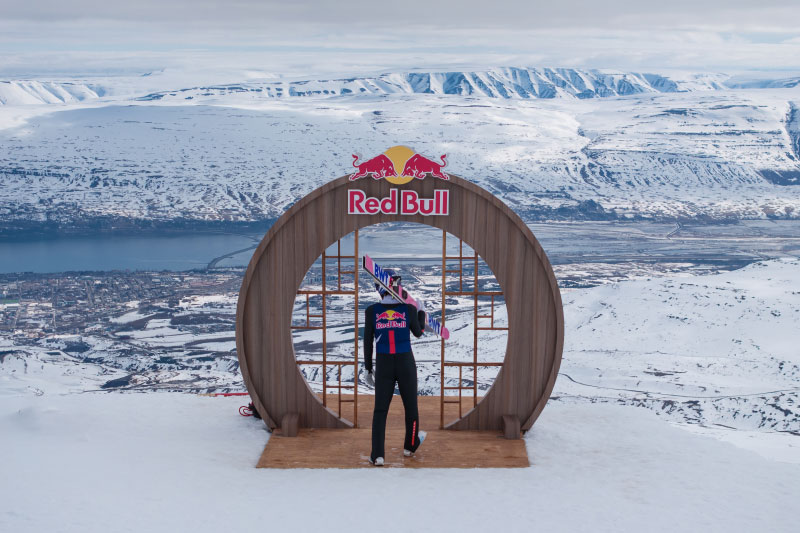
The audacious achievement holds deep personal meaning for the athlete. Already one of ski jumping’s all-time greats, Kobayashi, 27, has dreamed of taking the sport to new levels ever since his childhood in Japan’s Iwate Prefecture. His relentless dedication to mastering his art has propelled him to the forefront; so far, he has amassed 32 individual wins and two overall titles in the World Cup, individual gold and silver medals at the 2022 Olympics, and three overall titles in the iconic Four Hills tournament. But he was determined to make an even stronger statement for the sport and to do it on natural terrain.
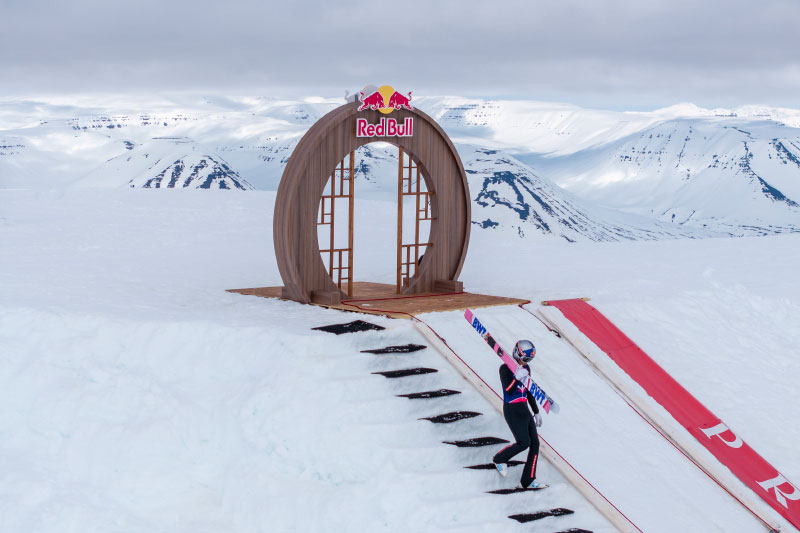
“This jump has been a dream of mine for a long time, as I’ve always wanted to jump farther than anyone ever has and I want to keep pushing the boundaries,” said Kobayashi, 27.
FROM A PHOTOGRAPHER’S PERSPECTIVE
This project was planned for a long time, but unfavorable weather conditions postponed Kobayashi’s attempt the first time. After that, the chances of this ski jumping record attempt to happen this year have become slim. However, the sky above Iceland seems to have opened just for us. We had a small window of excellent weather conditions. And although it wasn’t easy to gather such an international team to come to such a remote area in Iceland on such short notice, we made it.
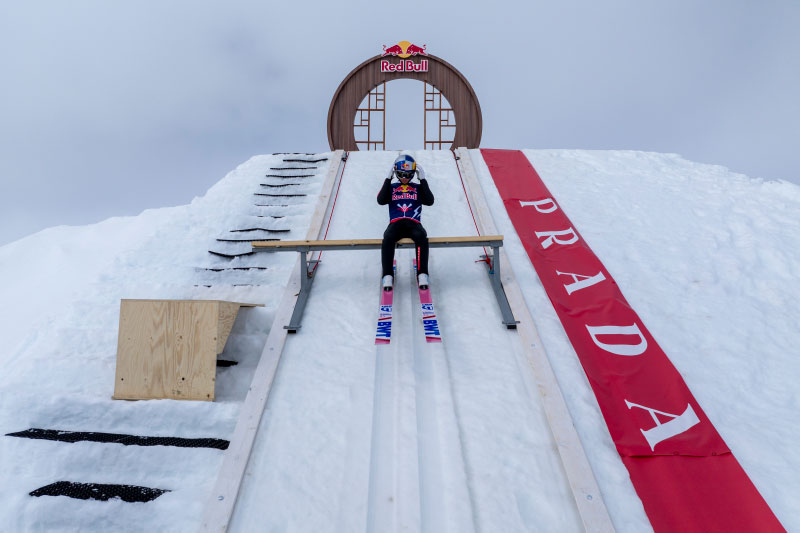
Never before have I had the chance to photoshoot something like this. Not just for the fact that it was a record-breaking attempt in a remote area, but for the nature and the logistics of the project. The photo crew had to cover a distance nearly 1 km long – 950 meters, to be precise. To achieve that and capture every moment – the preparation for the jump, the take-off, the flight itself, and the landing, we gathered four photographers, including myself. My role was to document Kobayashi’s preparation and take-off, so I was at the upper part of the field, at the take-off table. To capture this from all angles, I used five cameras, most of which were remotely controlled, which gave me the results I wanted to achieve. Other photographers covered the flight, and precisely the moment Kobayashi flew over the distance of 253 meters, which was the previous record, as well as the moment of setting the new record and landing. The photo team was up to the task. We were ready and prepared like it was going to be only one jump, but in the end, there were four jumps in total, so we had everything covered, and the outcome was satisfying.
BREAKING THE BARRIERS
Kobayashi’s long-held goal was unlike anything he, or any other ski jumper, had ever attempted – and his success is a testament to his ability to break barriers and defy expectations. While Kobayashi held the world’s second-longest ski jump with a personal best of 252m, none of the world’s existing ski flying hills could provide the physical conditions he needed for a bold attempt, or the wilderness backdrop he felt the sport deserved.
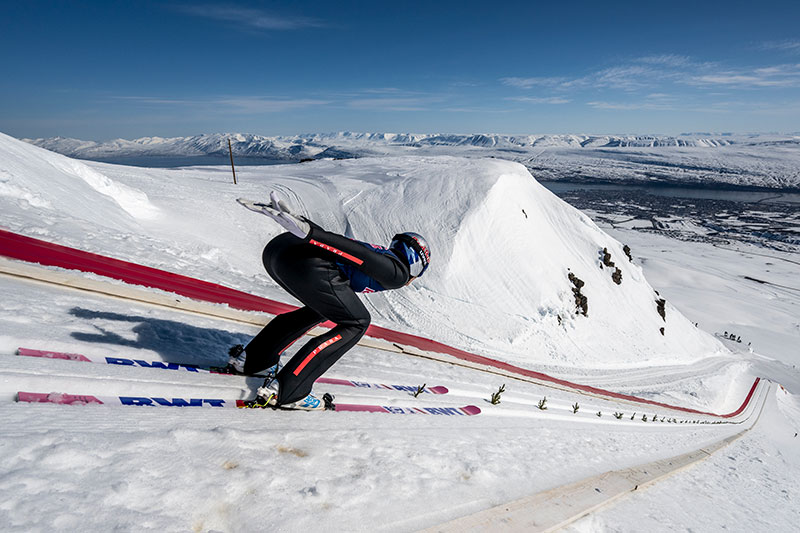
After a two-year search, the ideal site was discovered in Hlidarfjall Akureyri in northern Iceland. There, exclusively for the attempt, Kobayashi’s team devoted over two months to sculpting a snow ski jump table on the natural terrain that is 1,115 meters high at the start, descending across an altitude difference of 360 meters with a maximum gradient of 36 degrees.
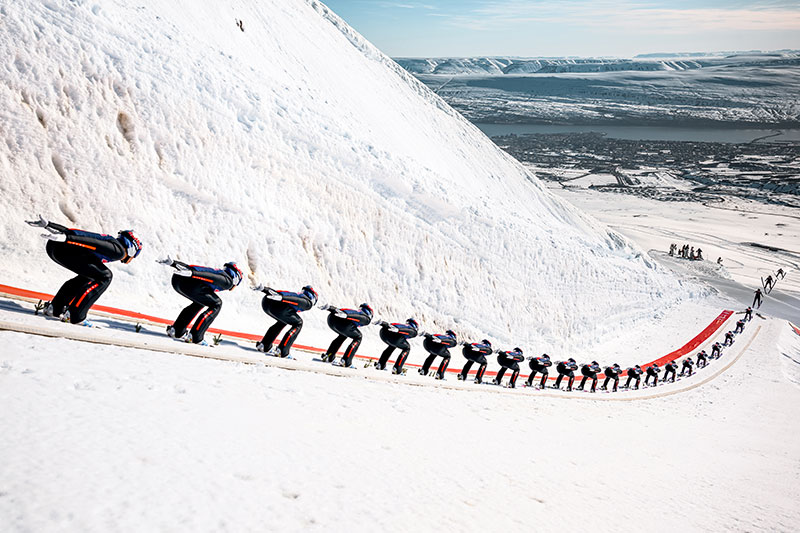
An important element in Kobayashi’s success was his collaboration with Prada Linea Rossa, one of the key partners supporting the athlete to achieve his ambitious goal in the unyielding environment of this remote location. Prada Linea Rossa’s advanced textile developments combine comfort and high-performance functionality, providing the athlete and core team members with functional clothing and accessories for the extended periods spent on the mountain.
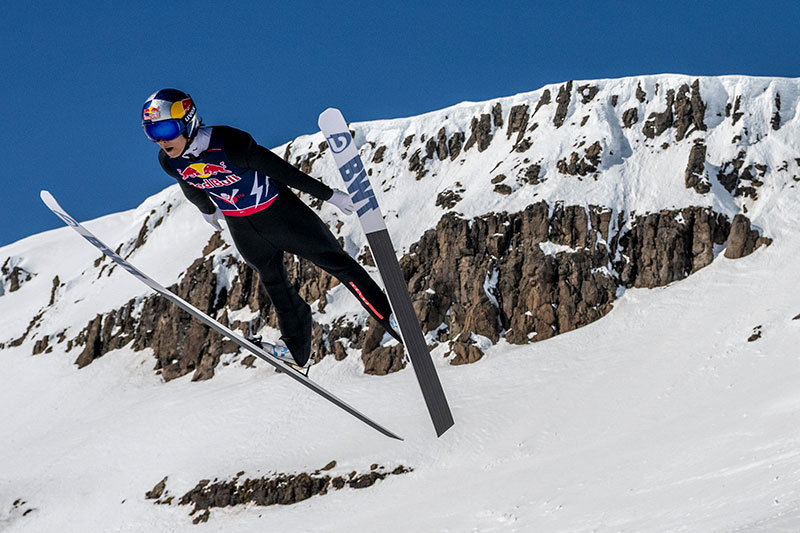
Managing the extended takeoff and jump would require a level of physical precision and mental focus beyond anything Kobayashi had experienced. The athlete had been preparing for the intense challenge since 2023, including training at the Red Bull Athlete Performance Center in Austria, and he fine-tuned his position and stability with specific wind tunnel training in Sweden. Once in Iceland, Kobayashi began his attempts on April 23, and while he set one new record after another at 256m, then 259m and 282m, the athlete was hungry for something bigger. When he finally set his 291m mark on April 24, emotions were high. Janne Vaeaetaeinen, Kobayashi’s coach for the world record attempt, said, “It was a crazy couple of days and I have so many thoughts right now, but an amazing and very exciting result to see this come to life. It was hard to know what to expect for the first jump, and then a rollercoaster of emotions throughout.”
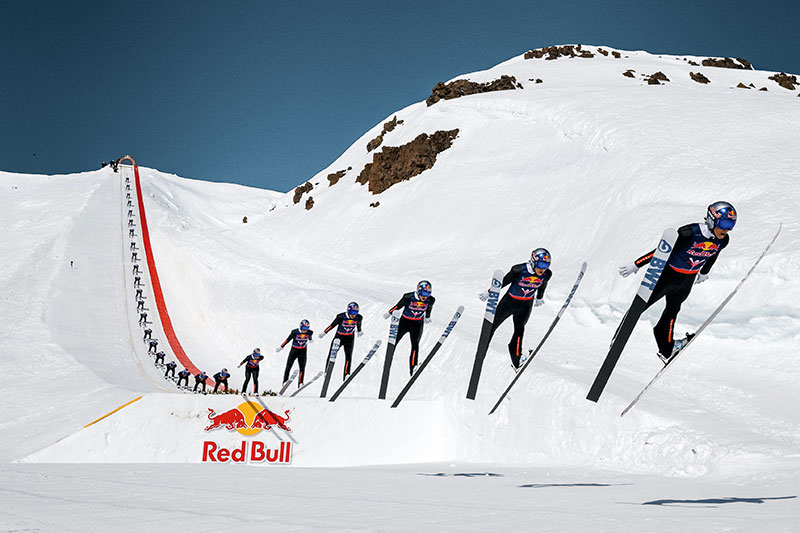
At home in Japan, Kobayashi is beloved not only for pulling off extraordinary jumps but also as a model and a connoisseur of street fashion. Those two sides of the athlete’s character came together in the helmet he wore in Iceland, which was designed by the globally influential street fashion legend Hiroshi Fujiwara. “My motivation also came from thinking about all the people involved in this project – to do it for everyone,” Kobayashi said. “I put everything on the line to go as far as possible in this incredible environment.” As Kobayashi celebrated his groundbreaking record, distinguished ski jumpers who have ventured to surpass the 200-meter mark in the past have come forward to offer their reflections on his remarkable achievement. Among them, Thomas Morgenstern, a former Austrian ski jumping champion known for his accolades in the sport and his thwarted attempt to break the 300-meter mark in 2010/11 due to FIS restrictions, weighed in on Kobayashi’s accomplishment with admiration.
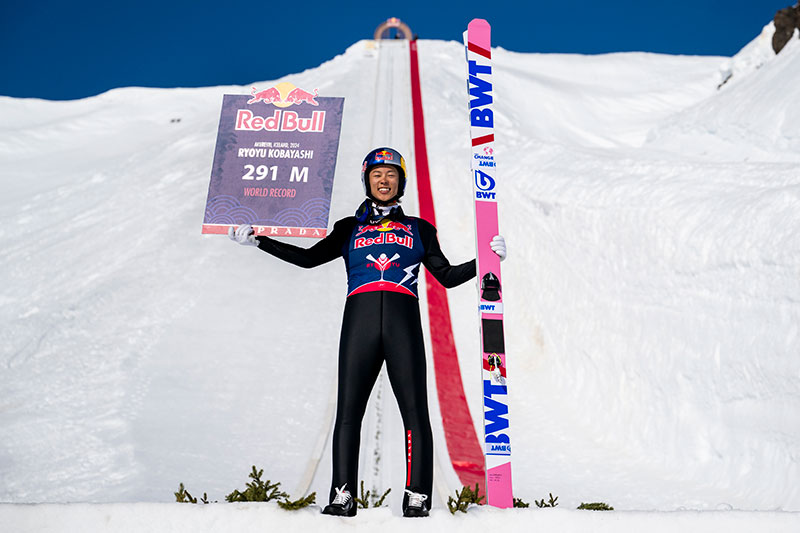
He commented: “When I heard that the jump worked out, it was an emotional moment for me. I can only congratulate Ryoyu on this top performance. Unfortunately, I wasn’t allowed to make my attempt on the Grossglockner in 2011, so I am more than pleased that he managed to set this record. It shows what’s possible in ski jumping, and I don’t think we’ve reached the end yet.” Andreas Goldberger, another Austrian ski jumping legend, echoed this sentiment, acknowledging the significance of Ryoyu’s achievement: ‘It’s amazing that Ryoyu is the person who has flown the furthest on skis, almost 40 meters further than Stefan Kraft’s record of 253.5 meters. The 300 meters would have been a major milestone, but he proved what is possible in our sport. “He continues: “Back in 1994, it was incredible for me to be the first person to break the 200-meter mark; it was something I dreamed of as a child. But this performance by Ryoyu is once again the next level, and it makes me incredibly proud because he has set new standards for ski jumping.”
THE JUMP IN NUMBERS
- Two months was the time it took to build the entire course, from the take-off table and the jump, to the landing. Two Snowcats (special snow vehicles) and four drivers who did this incredible job.
- 000 cubic meters of snow has been used to build the jump. And it took two weeks to shape the jump.
- 000 cubic meters of snow was used to build a snow landing.
- 1115 meters was the altitude on which they built the take-off.
- 291 meter is the length of the jump, the new world record set by Kobayashi
- 253 meters was the previous record that Kobayashi broke, and he did it by 37.5 meters.
- 107m/h was the top speed Kobayashi achieved at the take-off.
- 8 seconds was the time he spent in the air.
- 4 photographers covered the project.
- 12 still images cameras were used to capture the project
- 1000+ photos were made to document this historic moment.
ABOUT RYOYU KOBAYASHI
A World Cup champion, three-time Four Hills winner and owner of the longest jump in history, Japanese star Ryōyū Kobayashi is a ski jumping legend. Born in 1996 in the city of Hachimantai in Japan’s Iwate Prefecture, Ryōyū began skiing at the age of 5, but took up ski jumping a couple of years later, following the inspiration of his older brother.
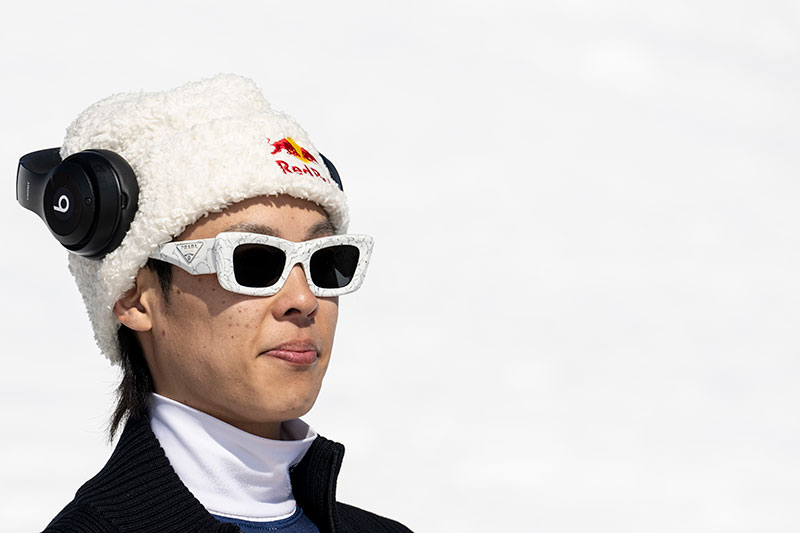
Ryōyū stepped out onto the world stage for the first time in the 2015 – 2016 jumping season. Several years later he started his dominance on the world stage. In 2018 he won a total of 13 World Cups across all disciplines, and all six possible titles in the World Cup season: the overall title, ski flying title, Four Hills Tournament, Raw Air, Planica7 and Willingen Five. In the 2020 – 2021 season, the Japanese star took victories in Poland and Slovenia. He then continued the winning streak in the 2021 – 2022 season, recording victories in Finland, Germany and Switzerland before winning the Four Hills Tournament for the second time. Ryōyū was constantly on the podium throughout the 2022 – 2023 season, including a 2nd place finish at the FIS Nordic World Ski Championships. He would then make the perfect start to 2024 as he became just the sixth man to win the Four Hills ski jumping tournament for a third time.


